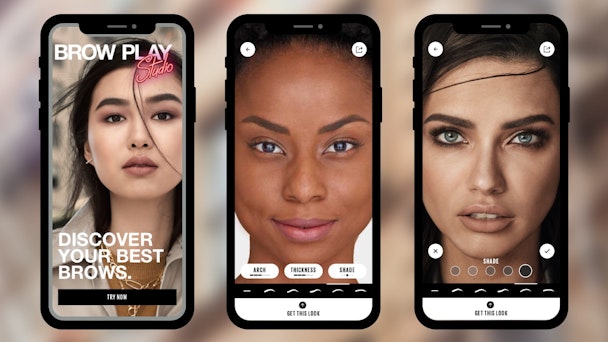How brands can adopt an experimental mindset to thrive in an ever-changing retail reality
We’re not short of articles, op-eds and whitepapers talking about the future of retail. It’s been written about plenty of times concerning new and probably entrenched behaviors in commerce.

Maybelline worked to connect with the shifting behaviors of younger shoppers.
Indeed, PSFK reported in their Future of Retail report that only 23% of consumers will shift back to in-store spending after the pandemic. The shift to online has led to brands finding new ways to create value, from virtual product try-ons (Maybelline Virtual Try-on) and shifting business models to clothes rental (My Wardrobe HQ), to e-commerce-enabled livestream and integrating different and growing forms of payment to account for mindful spending (Clearpay).
The truth is there’s no shortage of ideas and inspiration to tap into these new behaviors. However, to deal with the ever-changing reality you are going to need a strategy. One option is to spend time revising or devising an omnichannel retail strategy, which is both daunting and very likely to be out of date by the time you’ve finished.
The other is to take uncertainty head on and adopt an experimental mindset – one where the precondition is to significantly increase the chance of failure to increase your chances of real success. Simply put, you need to decide what you want to learn, put it to the test, and then try and improve on it. This approach opens up completely new doors to solutions you may never have thought of. It also lets you rapidly find and create new value and evolve and adapt your strategy as you learn, while keeping up with customers.
How you decide what you want to learn depends on identifying how you could create new value. Do this by identifying the key behaviors or consumer mindsets through data around your brand, category and proposition. It’s tempting to go far and wide in the hunt for data, but focus on the ‘right data’, and that is usually the data you own, or can access and measure easily such as your website or paid media analytics. Working for Clif, AnalogFolk broadened their DTC proposition to include mindsets of cyclists and runners, as the data showed that it wasn’t just climbers and campers buying their product.
Using this intelligence, it was possible to ideate and unlock new ways to create value, such as intelligent product recommendations for runners and cyclists, alongside specific activations focused on serving these new streams of value.
Fake it till you make it
With a list of ideas such as these, you should prioritize which ones you want to experiment with. There’s several criteria to consider, but critical ones are potential value to your business, feasibility of whether you can deliver it, whether you need to partner, and finally whether you can effectively measure these ideas. It’s hard to test if there’s no directly accessible data to assess your efforts against.
For example, for Maybelline to connect with the shifting behaviors of a younger shopper, we created a destination that introduced simple elements such as an Instagram-style carousel that allows visitors to save their favorite products on the homepage, along with unique tools that help them find products to suit their needs. Prioritizing the experience on the website gave immediate access to first-party data to assess the experiment against. But also understanding those interactions informed campaigns outside of the main website experience too.
The experimental mindset in principle is simple, but incredibly powerful. It allows you to quickly find new ways to get to market. Fail rapidly so you can identify what didn’t work and pivot from there. The best thing about this approach is if you fail that’s good, because that’s the point. Keep failing until you find what works for you, and then evolve and adapt it to make it work harder, while building out your connected commerce ecosystem.
So instead of trying to predict the future of your retail approach, put your ideas to the test instead. After all, the best way to predict the future is to make it the past.
Sol Ghafoor, director of strategic services, AnalogFolk.
Content by The Drum Network member:

AnalogFolk
Our mission is to use digital technology to make the analog world better and to also be an impactful agency of change for people, brands and society, in pursuit...
Find out more
